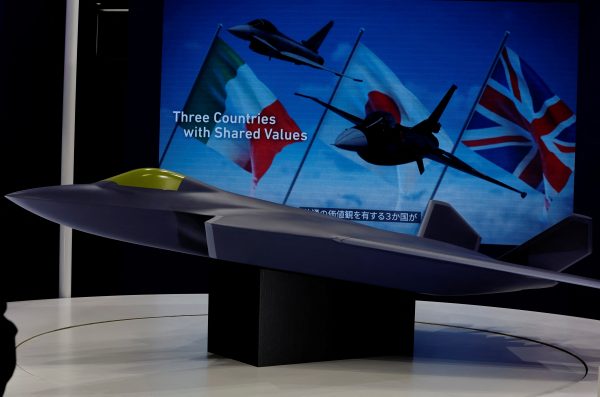The United Kingdom’s and Italy’s motivation to partner with Japan in the GCAP is to fill gaps in development funding. The number of aircraft that will be produced and their technological development has improved through Japanese participation in the GCAP.
Initially, Japan was seeking ‘Japan-led development’ of its Mitsubishi F-X fighter jet project, with a view to international cooperation in its Medium Term Defense Force Development Plan, assuming joint development with the United States or the United Kingdom. But as the United States was reluctant to support ‘Japan-led development’ and technology transfer, Japan chose the United Kingdom as a joint development partner for its next-generation fighter aircraft.
Many contentious issues are expected to arise in the GCAP program, including negotiations over development initiatives, operations, specifications, the sharing of development costs, technology transfer, scheduling and production sharing. The desired outcome of the GCAP is to contribute to regional security by establishing the weapon system as the core of NATO and AUKUS regional cooperation in responding to the war in Ukraine and military tension with China.
Operational requirements, technology and industry, development cost sharing and alliance politics are all essential in international joint development. But the negotiations in the GCAP seem to be driven mainly by alliance politics.
It is essential to understand the United Kingdom and Italy as partners in the context of Japan’s ‘Japan-led’ development policies. During the 20 years of United States–Japan Mitsubishi F-2 fighter jet operations, Japan has been able to implement ‘Japan-led’ development in operational requirements, upgrades and system integration. These are the three independent operations that should be continued in the GCAP.
These and other issues will likely be the subject of negotiations among the three countries. Japan has only co-developed defence technology projects with the United States in the past. Negotiation is essential for the success of the GCAP, which will be Japan’s first co-development with a country other than the United States.
The key to the success of the GCAP is to expand the number of aircraft produced before achieving economies of scale and learning curve effects through exports to the European and Asia Pacific markets, where many states are scheduled to begin their procurement of fifth- or sixth-generation fighter aircraft.
The key is to develop a cheap and downgraded version of the GCAP, not only for target countries that envisage modern air warfare in terms of stealth but also for those that do not. In the former case, the French–German–Spanish Future Combat Air System will be a contender, while in the latter, the South Korean–Indonesian KF-21 will be the frontrunner.
In the context of the AUKUS framework, it will be essential to determine what performance Australia requires of its next generation of fighter aircraft. Within the hub-and-spoke alliance network centered in the United States, it is necessary to promote regional cooperation among the United Kingdom, Japan and Australia.
The United Kingdom, Japan and Italy need to offer offset deals where Australia and other fourth countries can participate in the development and production of GCAPs and import non-fighter weapons, agricultural products and resources when they consider purchasing GCAPs.
Japan’s promotion of GCAP exports and offset deals requires a relaxation of its outdated Three Principles on the Transfer of Defense Equipment and Technology. Notably, the prohibition of transfers that ‘violate obligations under UN Security Council resolutions’ needs to be reviewed urgently, as the UN Security Council has not been functioning effectively since the outbreak of the war in Ukraine.
Japan must shift its strategic outlook and promote a mission-oriented defence policy. By introducing mission engineering methods into GCAP development, which the United States and United Kingdom are leading, Japan can promote GCAP development smoothly and enhance regional security cooperation, including weapon systems, with AUKUS countries, including Australia.
Takeshi Sakade is Professor in the Graduate School of Economics at Kyoto University.

